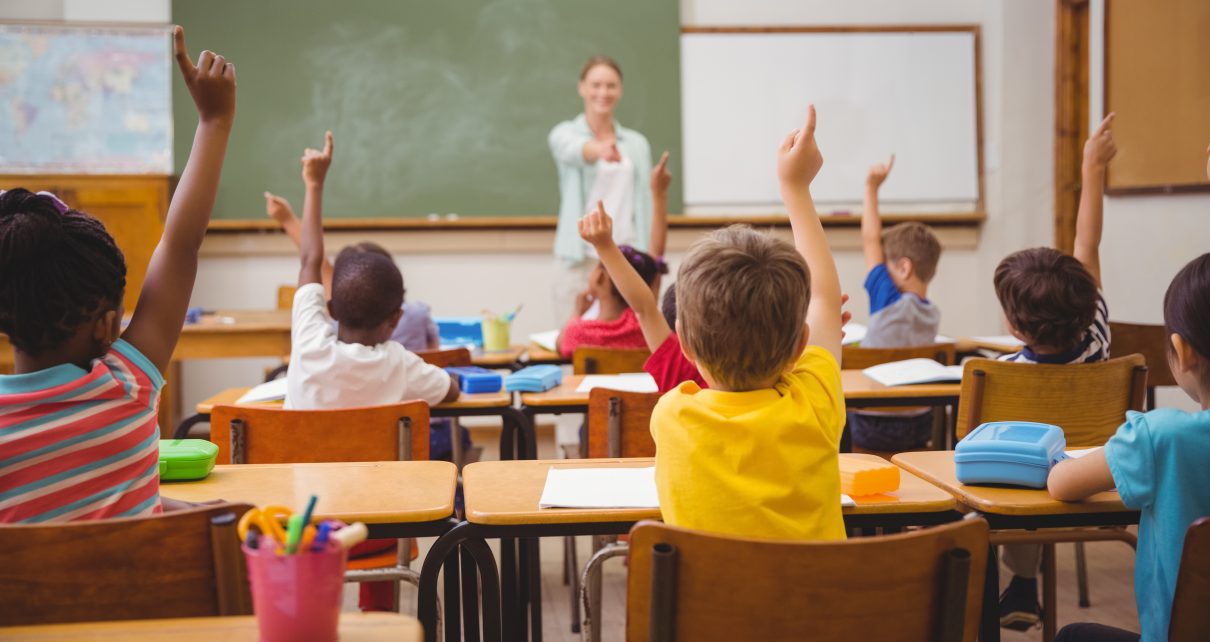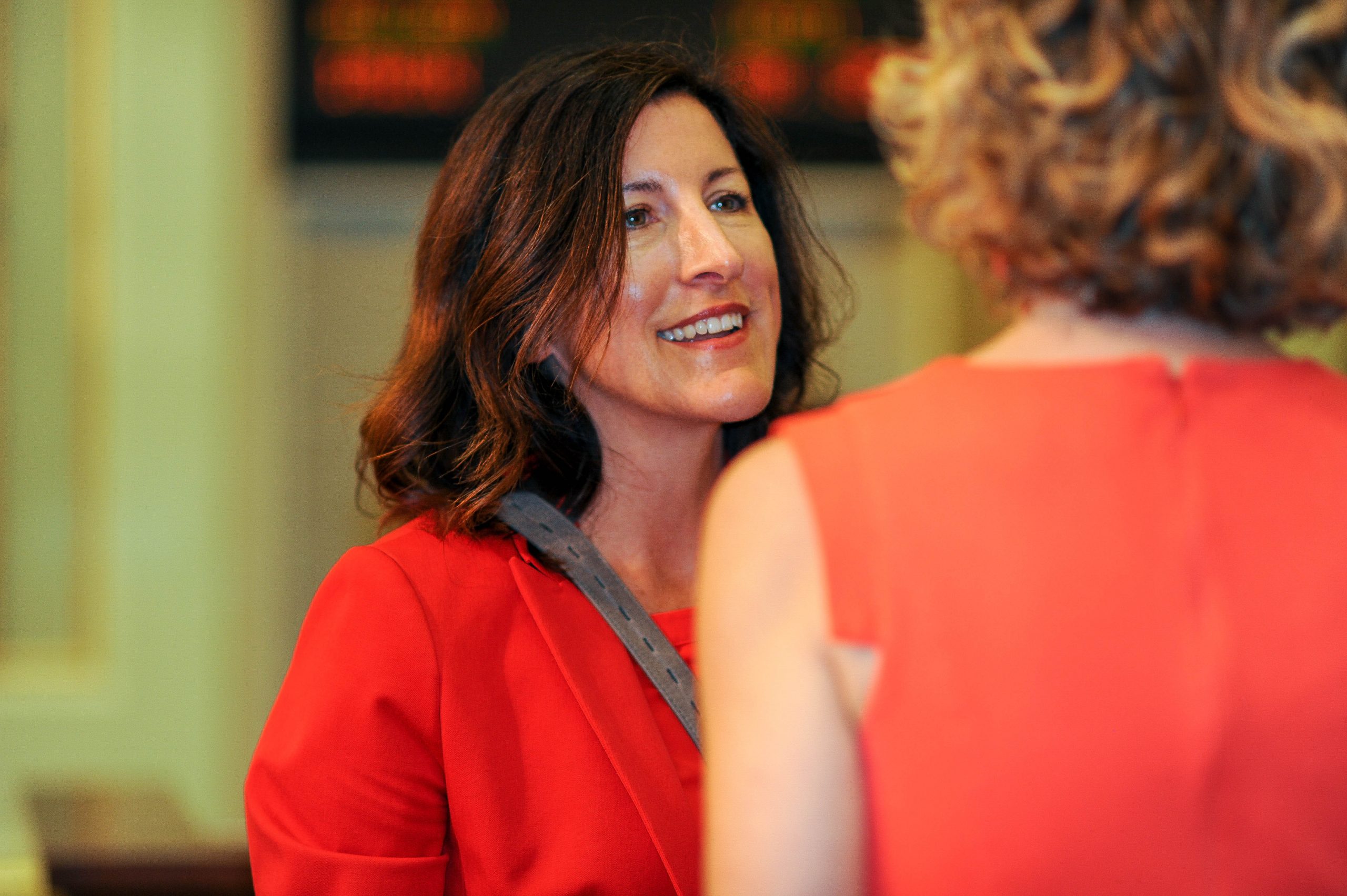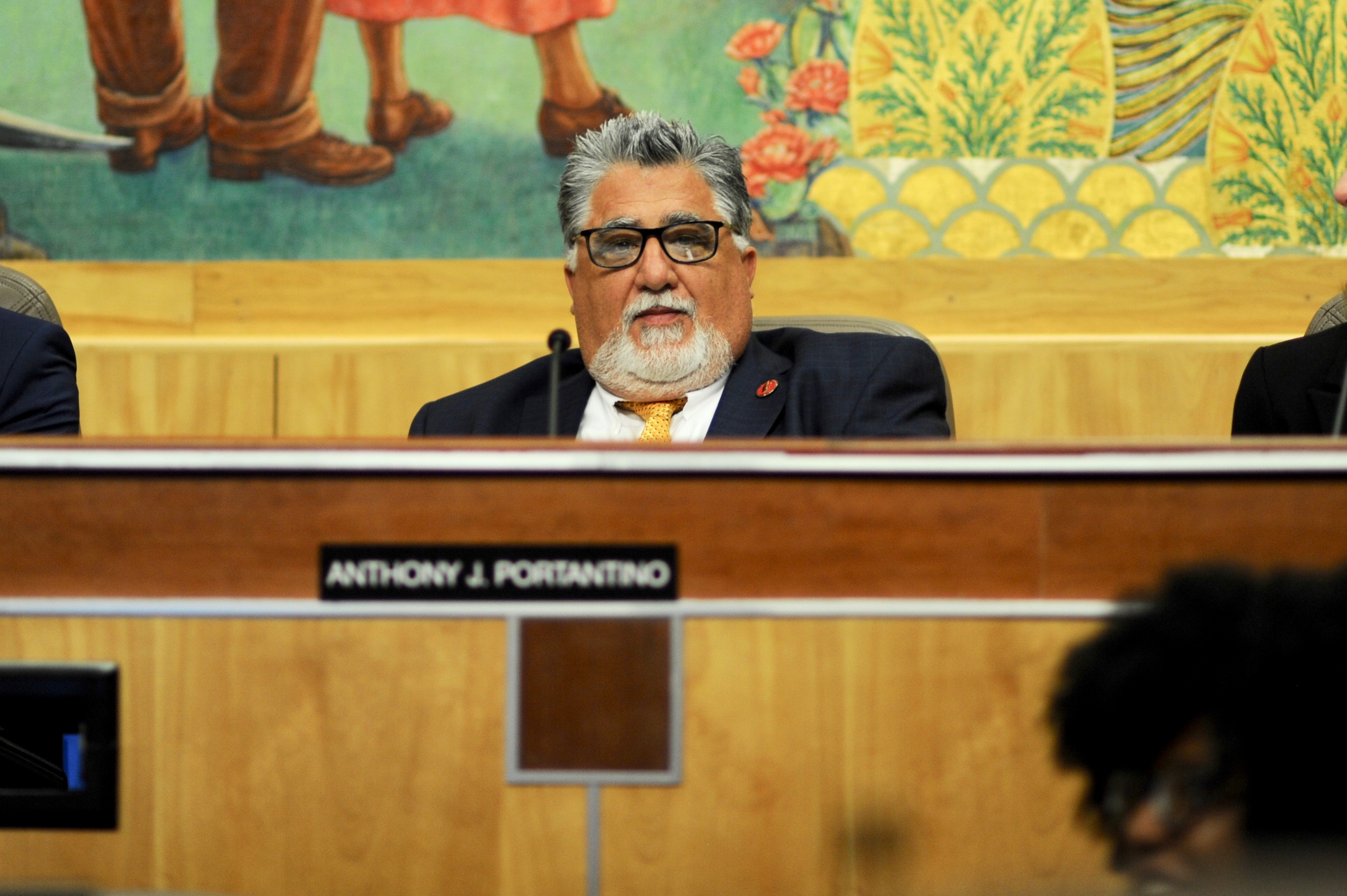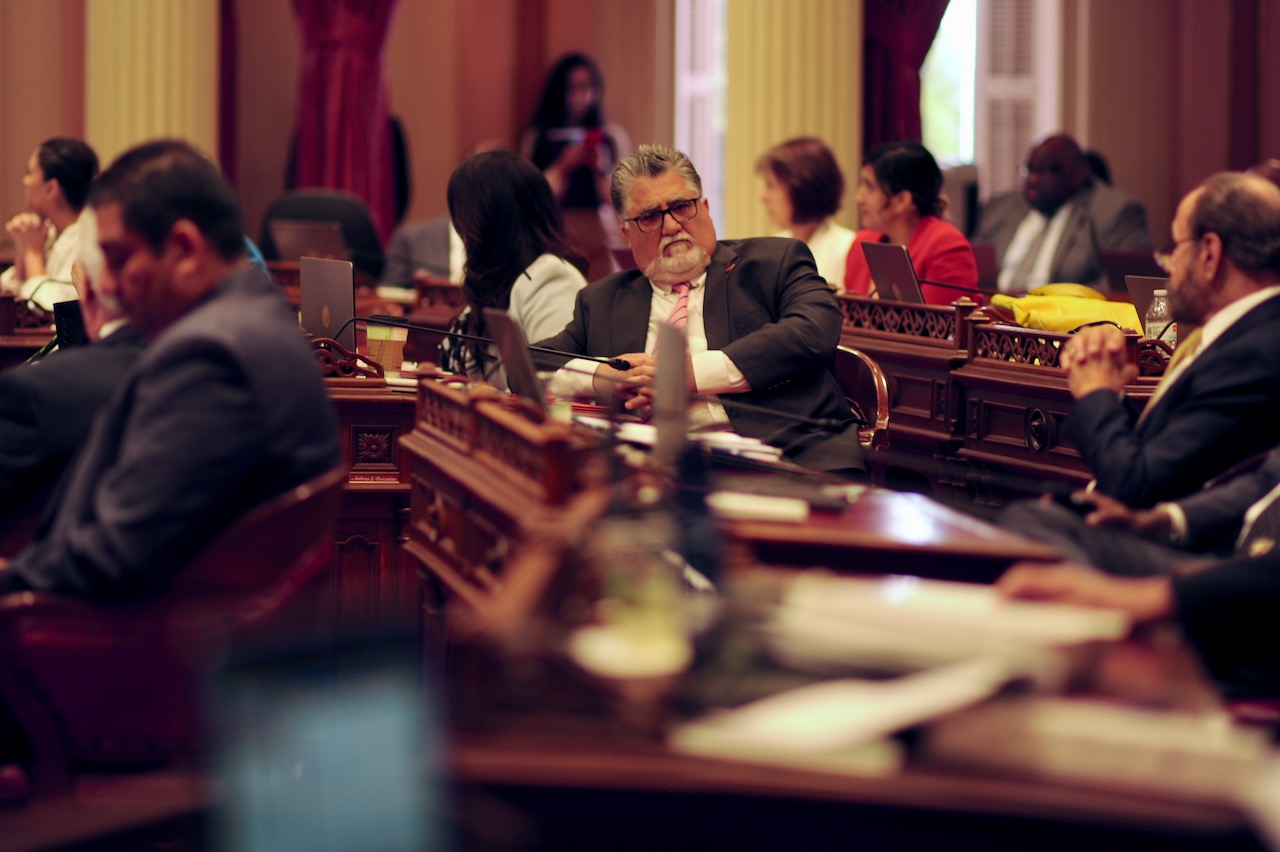
Elementary Students in Class. (Photo: SB Professional/Shutterstock)
School Safety: Can We Risk Politicizing It?
California’s push to upgrade its gun laws exposes lack of political will to reform our public education system
By Wenyuan Wu, June 2, 2022 6:29 am
In the wake of the deadly school shooting in Uvalde, Texas, Americans have renewed public debates on school safety, gun control, and mental health. In California, Democratic lawmakers rushed to advance a flurry of bills to tighten government regulations over gun owners, manufacturers and distributors. This essay analyzes a number of new gun legislation as they relate to school safety.
Please note that the article is NOT about gun control, a separate topic worthy of more extensive scientific inquiry. It is about the efficacy of different school safety measures including gun control and more broadly, how we as a society can ensure safety for our children in schools.
Among the slate of bills being considered in the State Legislature, SB 1327 would allow private citizens to sue gun manufacturers, distributors and traders for dealing assault weapons, .50 BMG rifles or ghost guns. The bill is sponsored by Governor Newsom. SB 906 would mandate school officials to report perceived threats of a mass shooting to law enforcement and require school districts to disseminate safe gun control storage information. SB 915 bans gun shows and firearm sales on state property. SB 1384 demands that gun dealers install video surveillance systems at their business sites. AB 2571 outlaws advertising of firearms in manners that attract minors. AB 1594 would allow the State Attorney General and individuals to sue gun manufacturers and sellers for harms. AB 1621 would further crack down on sales of ghost guns. Governor Newsom has signaled his full support for this extensive package of gun control legislation.
Are these proposals going to be sufficient or effective in curbing growing gun-related violence that is sweeping the nation and threatening the safety of our young students? What else must be done to strengthen public safety in a society divided by race and ideology?
This timely report examines the broad context behind California’s recent push to upgrade its gun laws, critically analyzes various flaws with a legislative approach hyper-focused on gun control and discusses the bigger issues exposed by a lack of political will to reform our public education system.
A Demand for Stricter Gun Control or Politicization?
In the first five months of 2022 alone, 17,923 lives were taken due to gun violence, 9,966 of which were suicides. There have been 230 mass shootings, defined by the numeric value of 4 or more shot or killed excluding the shooter(s), which resulted in 150 children aged 0 to 11 being killed, and 529 teens aged 12 to 17 being killed. The numbers of gun deaths, mass shootings children killed or injured, and teens killed or injured have all dramatically increased since 2014, raising public concerns for a national public safety crisis. In California, by May 31, 2022, 112 children and teens were killed or injured due to gun violence.
The most intuitive and oversold answer to gun violence is tighter control over gun usage, production and marketing. It also makes sense for political pundits seeking to score quick wins over thorny issues. However, policy makers, public intellectuals and social scientists have all stressed the need for more nuanced approaches that tackle the underlying, multifaceted causes behind rising gun violence. At a minimum, scholars tend to advocate for balanced approaches between gun control and gun rights. More importantly, a near-obsessive focus on gun control being the solution simply sidetracks from other consequential factors surrounding school shootings and rising threats to school safety. In cases involving school-age victims and/or teenage shooters, such factors are closely related to mental health, family environment, community/social network, social isolation and so on. These wider sociocultural problems can’t be cured or alleviated with gun reforms.
Sadly, against empirical evidence that over 98% of mass shootings took place in “gun free zones,” progressive politicians have exploited the recent tragedies to lash out on their political opponents and push for a partisan agenda of gun control. Immediately after the Texas shooting, both Governor Newsom and Attorney General Bonta took their gripes with their Republican counterparts to social media, accusing that “the GOP won’t do a damn thing about it” and that “GOP continues to prioritize the gun lobby over the LIVES of our children.” Such unhelpful antics distract from necessary consensus-building and policy deliberations required to solve the complex crisis at hand.
Ideological Hijacking Exacerbates the School Safety Crisis
Policy proposals regarding school safety are not only politicized by an incessant emphasis on gun control, but also hijacked by fringe ideologies crystalized as “restorative justice,” “safe space campus,” “racial equity,” and “equitable discipline.” California State Senator Steven Bradford introduced SB 1273 to amend existing state law for school safety and repeal the existing law’s mandatory reporting requirement for schools to report threats of violence by students in the classroom. The bill author argues that the removal of mandatory reporting would make schools more comfortable for students, especially those who are at risk of entering the school-to-prison pipeline. The rationale that not holding disruptive or violent students accountable will somehow create a safer school environment is mind-boggling. Withholding information that would otherwise help law enforcement identify potential threats of violence is also an obstruction of justice. Disregarding the bill’s apparent logical error, the State Senate passed SB 1273 on a strict party line.
Senator Bradford also co-authored AB 2598 with Assemblywoman Akilah Weber to reform school discipline policies toward the “restorative justice” model for elementary and secondary schools. The bill is expected to smooth-sail out of the State Legislature this summer to be signed into law by the Governor.
When the national conversation should have been focused on putting Red Flag laws in place for student safety, our state lawmakers are attempting to take them out in the name of justice and equity, and to make schools safer. Whose safety are these proposals after – the total student body over the violent, disruptive child or the other way around? The latter priority seems to signal that violence in school is OK where the possibility of saving a child, especially one from a ‘marginalized’ ethnic group via restorative justice is considered.
These trendy “restorative justice” bills are the latest to an installment of state laws that collectively seek to dismantle the school-to-prison pipeline and mitigate the disproportionate impacts of school discipline on “African American students and others overrepresented in suspension statistics.” On August 19, 2021, the California Department of Education issued “State Guidance for New Laws on Discipline,” outlining the state’s endorsement of “Multi-Tiered System of Supports (MTSS), positive behavior intervention systems, implicit bias training, restorative practices, and engaging academics.” Specifically, the new paradigm is intended to replace suspension and other punitive discipline practices, by ending suspensions for willful defiance in grades K through 8, providing homework for students suspended for two or more days, minimizing punitive measures for truancy or absence, and instituting trauma-informed practices and social-emotional learning.
In spite of the state’s official pledge that these new-age concepts are proven effective in improving “academic outcomes and long-term postsecondary success for all students,” there is little supportive evidence from large-scale empirical observations. Rather, proponents of restorative justice, social-emotional learning, culturally relevant teaching, implicit bias training, and other similar constructs are simply following an ideological conviction that traditional school discipline policies create a disparate impact on certain student groups and therefore constitute practices of “systemic inequities.” Without addressing the deeper roots of disruptive school behavior at individual, familial, and community levels, restorative justice and its bedfellows are ideational vehicles that inaccurately target school discipline and engineer more racial divisions among students. By coddling victimhood, accommodating unacceptable behavior and discouraging accountability, schools become an accomplice in the cultural degradation and exacerbate the mental health crisis among American children and teenagers.
In fact, most of the pleasant-sounding keywords for the school discipline reform are deeply rooted in the fringe dogma of critical race theory (CRT). Branded to foster a true understanding of different cultural values, beliefs and practices, culturally responsive learning is thematically related to a CRT-based way of teacher education to critically examine “White racial domination” and promote critical social justice. Social-emotional learning (SEL), supposedly an innovative learning process to advance equity, is an untested model for social justice and identity politics. According to the Collaborative for Academic, Social and Emotional Learning, a leading institute that popularizes the process on a national scale, “SEL can help address various forms of inequity and empower young people and adults to co-create thriving schools and contribute to safe, healthy, and just communities.” For SEL practitioners, the practice must be infused with “a racial equity lens, abolitionist lens, and others to racial justice as you name it” in order to be differentiated from white supremacy. can morph into crude racial stereotyping. Last but not least, the concept of “restorative justice” is thoroughly guided by the Neo-Marxist critical theory that treats racial disparities mono-causally as evidence of systemic racism and corrupted by a race-based view of our school system.
Going Forward Toward More Effective Policy Proposals
Equitable restorative justice and transformative social-emotional learning are not just passive byproducts of dogmatizing school safety programming, but are also important contributing factors to dangerous behavioral issues in and around our schools. Imposing no consequences for disruptive behaviors makes a mockery of orderly learning environments, while racializing every classroom only adds to the chaos in the names of equity, affirmation and justice. Being constantly told that the system is to blame, kids are captured by a nihilist worldview and groomed into radical activists.
The logical starting point for workable measures to enhance school safety is not politicized gun control or ideological virtue-signaling. One cannot begin to solve a problem before the problem is even identified. It is imperative for social scientists, public intellectuals, policy makers, policy practitioners, and community stakeholders to come together and study the complex factors and causal links that lead to the crisis. Leading universities and colleges should not concern themselves with towing the party line, but be occupied with producing rigorous, cutting-edge research and policy recommendations. The impacts of culture and the rising phenomenon of fatherlessness must be paid special attention in serious scholarly inquiries.
If we know ideology is not the answer, we should not perpetuate the crisis by chasing the wrong solution. Advocating for special treatment in schools, while turning a blind eye to larger sociocultural and individual problems that have facilitated disruptions in the first place, is a fool’s errand. The government, including public schools, has a primary responsibility to protect the life and liberty of its citizens by upholding the U.S. Constitution. It is not here to legislate “virtue,” or diminish freedom.
While we work to devise sensible policy proposals that address mental health, law enforcement capabilities, family breakdown and other contributing factors, public agencies must faithfully observe and enforce our constitutional principle of equal treatment in schools and classrooms. Without equality, ideological indoctrination and political non-solutions will take over to the detriment of school safety.
- Legal Advocacy Stops a Racially Exclusionary Scholarship at UC San Diego - October 30, 2025
- Gavin Newsom Supporter Tells Chinese American Activists to ‘Go Back to China’ - October 24, 2025
- Fighting White Supremacy Once Again, Ku Klux Klan Act is Challenging Race-based Scholarship at UCSD - August 4, 2025





We have years and years of experience that shows us The Usual Suspects are only interested in exploiting these horrific events for their own “benefit.” If that kind of belly-crawl in the gutter doesn’t tell you something about modern Democrats, nothing will.
The totalitarian NWO depends on disarming Americans. Leftists absolutely adore the shooting galleries called “gun free zones” as they serve to advance their evil agenda.
Not as long as politicians enjoy dancing on still warm bodies.